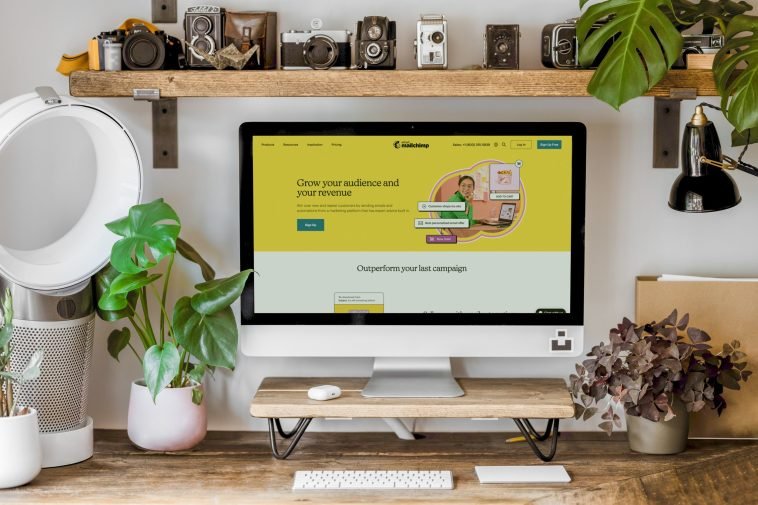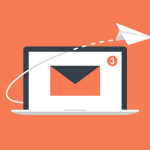Introduction.
Email marketing is a powerful tool for connecting with your audience, but it can also be frustrating when your emails don’t get the attention they deserve. One key issue that many marketers face is a high bounce rate.
If your emails are bouncing back, that means they aren’t reaching your recipients, and you’re essentially wasting your time and resources.
The good news is that reducing your bounce rate is completely achievable with the right strategies. Let’s talk about why bounce rates matter, what causes them, and how you can fix this problem to improve your email marketing game.
What is Bounce Rate in Email Marketing?
Before diving into how to reduce bounce rates, let’s quickly define what we mean by “bounce rate.” In email marketing, a bounce occurs when an email can’t be delivered to a recipient’s inbox. There are two types of bounces:
- Soft Bounces: These are temporary delivery issues, like a full inbox or a server problem. Usually, the email can be delivered later.
- Hard Bounces: These are permanent issues, like an invalid or non-existent email address. These are the real troublemakers because they directly impact your sender reputation.
Now, why should you care about bounce rates? Because the more bounces you have, the worse your sender reputation becomes.
And if your sender reputation tanks, your emails are more likely to end up in spam folders or be completely blocked by email providers.
A high bounce rate can also prevent you from getting a true sense of your email campaign’s effectiveness, making it harder to analyze and improve future campaigns.
Why is Bounce Rate Important in Email Marketing?
High bounce rates hurt your email deliverability. When you have too many invalid email addresses on your list, email providers (like Gmail, Outlook, and Yahoo) see this as a red flag and might flag your future emails as spam or even block them entirely.
It also affects your engagement metrics. If emails aren’t getting delivered in the first place, how can you expect anyone to open, read, or click through them?
And, let’s not forget about your brand’s reputation. If your emails are bouncing frequently, people may start to think you aren’t taking the time to maintain a clean list, which could hurt your credibility.
What Causes High Bounce Rates?
There are a few main culprits behind high bounce rates:
- Invalid Email Addresses: This is the most obvious reason. If someone changes their email address or leaves an old email account behind, their address becomes invalid. Keeping your list updated is essential.
- Email List Hygiene Issues: Sometimes people use temporary or fake email addresses to sign up for your emails. If you’re not cleaning your list regularly, these bad addresses will continue to cause problems.
- Spam Traps: These are email addresses set up specifically to catch spammers. If you send emails to these addresses, it could hurt your sender reputation. These are tricky because you don’t always know they’re there!
- Issues with Email Servers: Sometimes, the problem isn’t on your end but with the recipient’s server. If their inbox is full, or their server is temporarily down, your email might bounce back as a soft bounce.
- Poor Email Content or Formatting: This is often overlooked, but sometimes email servers flag poorly formatted or spammy-looking emails, which can increase bounces.
How Do I Reduce Bounce Rate in Email Marketing?
Now, let’s get to the fun part: how to fix this! There are several strategies you can use to reduce your bounce rate and improve your email marketing performance.
1. Clean Your Email List Regularly
This is probably the most important step. Make sure you’re removing inactive, invalid, or incorrect email addresses from your list.
There are tools out there that can help you automatically clean your list by removing bounced addresses and invalid emails, so it’s easy to stay on top of it.
A good rule of thumb is to clean your list at least once a month. If you don’t have the time to do it manually, you can use email verification services like ZeroBounce, Hunter.io, or NeverBounce to help you keep things tidy. These tools verify the email addresses on your list and remove invalid or risky ones.
2. Use Double Opt-In for Subscriptions
Double opt-in is a great way to ensure that the people who are subscribing to your list actually want to hear from you.
When someone signs up for your email list, they receive a confirmation email asking them to verify their subscription. This step ensures that the email address is valid and that they actually want to receive your emails.
Double opt-in also helps prevent spam traps, fake sign-ups, and bots from getting on your list. This adds an extra layer of protection and keeps your list clean.
3. Segment Your Email List
Segmentation is key to reducing bounce rates and improving engagement. By dividing your email list into smaller, more targeted groups, you can send more relevant content to your subscribers.
If your emails are more personalized and tailored to their interests, you’ll see better open rates and fewer bounces.
For example, you can segment your list based on factors like:
- How recently someone subscribed
- Their geographic location
- Past interactions with your emails (opens, clicks, etc.)
This helps ensure that you’re sending the right emails to the right people.
4. Check and Optimize Your Email Content
Sometimes, emails bounce because of content issues, like a spammy subject line or broken links. Make sure your emails look professional and aren’t triggering spam filters.
Keep your subject lines clear and avoid using all caps or excessive punctuation marks, which can be seen as spammy behavior. Also, test your email formatting before sending to make sure everything looks good on all devices.
5. Monitor Your Bounce Rate Regularly
If you don’t monitor your bounce rate, you won’t know when something goes wrong. Most email marketing platforms provide detailed reports on how your emails are performing, including the bounce rate. Keep an eye on these reports to catch any sudden spikes in bounces.
If you notice a high bounce rate on a particular campaign, investigate it immediately. Check the email addresses on your list, see if there are any content issues, or consider running a test with a smaller portion of your list.
6. Warm Up Your Email Domain
If you’re sending emails from a new domain or IP address, email providers may be cautious about delivering your messages.
To avoid being flagged as spam, you need to warm up your email domain.
This means starting by sending a small number of emails to engaged users and gradually increasing the volume over time.
It helps build a positive sender reputation and ensures that your emails get through. Email warming services like Warmup Inbox or MailReach can help automate this process.
FAQs
Q: What’s a good bounce rate for email marketing?
A: A bounce rate of less than 2% is considered good. Anything higher than that might indicate issues with your email list quality or sending practices.
Q: Can I avoid bounces altogether?
A: Unfortunately, no. Some bounces are inevitable, like soft bounces from full inboxes. However, following best practices can significantly reduce the number of bounces you experience.
Q: How often should I clean my email list?
A: It’s a good idea to clean your list at least once a month, but you should also regularly check for invalid addresses and remove inactive subscribers to keep things fresh.
Q: How can I improve my sender reputation?
A: Maintain a clean email list, use double opt-in, monitor your bounce rates, and avoid sending spammy content. The better your email hygiene, the better your sender reputation.
Conclusion
Reducing your bounce rate is crucial for the success of your email marketing campaigns.
By cleaning your email list, using double opt-ins, segmenting your audience, and optimizing your content, you can dramatically improve your email deliverability and engagement rates. Remember to monitor your results regularly and make adjustments as needed.
So, now that you know how to reduce your bounce rate, what steps will you take to clean up your email marketing strategy today?





GIPHY App Key not set. Please check settings